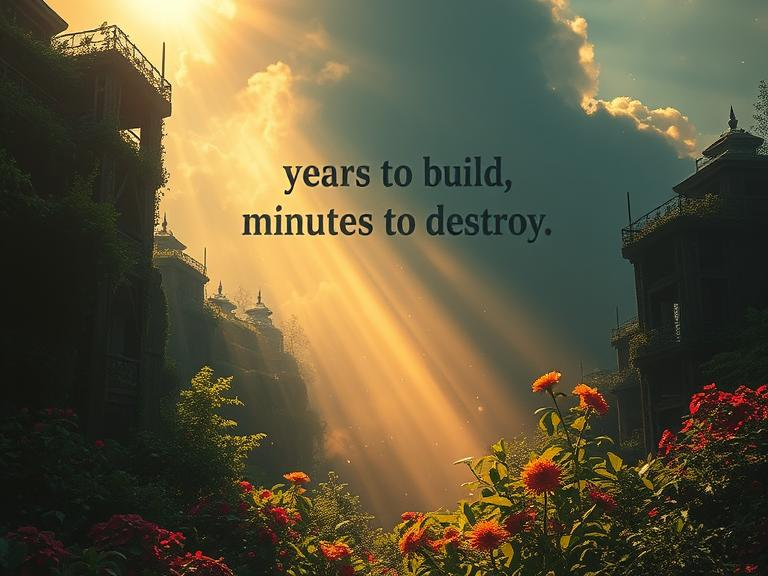
In an age where technological advancements are celebrated daily, the world often finds itself confronted with a stark paradox. The immense time and effort it takes to create something of value juxtaposed with the alarming ease with which these creations can be dismantled. The phrase “years to build, minutes to destroy” encapsulates this dichotomy. It serves as a poignant reminder of the fragility of our achievements. Whether they are physical structures, social systems, or even relationships.
The Time Investment
Building something worthwhile—whether a skyscraper reaching for the clouds, a sustainable community, or a thriving business—requires countless hours of labor, meticulous planning, and often a significant financial investment. Consider the construction of a major infrastructure project, like a bridge. Engineers and architects spend years designing and ensuring safety protocols. Workers wield tools in harmony, pouring concrete and erecting steel beams, all with the vision of creating a lasting symbol of progress and innovation. The culmination of these efforts can alter landscapes, enhance communities, and also foster economic growth.
Similarly, social constructs, such as trust between individuals or communities, evolve over years or even generations. They are built on shared experiences, communication, and the gradual formation of mutual understanding. Just as a skyscraper stands as a testament to human ingenuity, these invisible yet tangible social bonds represent the potential for collective achievement.
The Ease of Destruction
However, this painstaking process of construction stands in stark contrast to the ease with which these structures, systems, or relationships can be dismantled. A natural disaster can lay waste to a community built over decades in mere moments. A single act of violence can shatter years of carefully cultivated trust in minutes. Miscommunication or betrayal can irreparably damage relationships in minutes that took years to forge.
In contemporary society, the digital world compounds this issue. An individual’s hard-earned reputation can be tarnished by a single misplaced comment or a viral social media post. Similarly, corporations can see their market value evaporate almost overnight due to scandal or public backlash. It’s a sobering reality that highlights the inherent vulnerability of our most cherished constructs.
Lessons and Reflection
The disparity between the time it takes to build and the time it takes to destroy emphasizes a critical lesson: resilience must be integrated into every endeavor. This means designing buildings that can withstand natural disasters. For communities, it calls for frameworks where relationships can weather misunderstandings. For businesses, it encourages the establishment of ethical practices that promote sustainability and also growth over mere profitability.
Moreover, the lessons extend to our personal lives. The relationships we cultivate, the skills we acquire, and the dreams we chase require ongoing effort and dedication to maintain. Just as it takes years to build, it also requires constant nurturing and vigilance to protect against destruction.
In our increasingly fast-paced world, this principle serves as a vital reminder that while building takes time, the act of destruction can often appear alarmingly effortless. As we navigate our lives—individually and collectively—we must remember the value of our creations and work diligently to preserve what matters most.
The phrase “years to build, minutes to destroy” is not merely an observation but also its a call to action. It urges us to honor our creations—both tangible and intangible—and to take proactive measures to protect them from harm. As we forge ahead in a future rich with potential, let us strive to build wisely, recognizing that with every tower we construct and every relationship we foster, a cloud of fragility also looms close at hand. Therefore, in embracing this paradox, we can create a more resilient world, ensuring that our legacies endure beyond mere moments.
